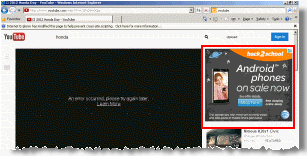Affiliate programs vary dramatically in their incidence of fraud. In some merchants’ affiliate programs, rogue affiliates fill the ranks of high-earners. Yet other similarly-sized merchants have little or no fraud. Why the difference?
In Information and Incentives in Online Affiliate Marketing, Wesley Brandi and I examine the impact of varying merchant management decisions. Some merchants hire specialist outside advisors (“outsourced program managers” or OPM’s) to set and enforce program rules. Others ask affiliate network staff to make these decisions. Still others handle these tasks internally.
A merchant’s choice of management structure has significant implications for both the information available to decision-makers and the incentives that motivate those decision-makers. Outside advisors tend to have better information: An OPM sees problems and trends across its many clients. A network is even better positioned — enjoying direct access to log files, custom reports, and problems reported by all merchants in the network. That said, outside advisors usually suffer clear incentive problems. Most notably, networks are usually paid in proportion to a merchant’s affiliate channel spending, so networks have a significant incentive to encourage merchants to accept even undesirable affiliates. In contrast, incentives for merchants’ staff are typically more closely aligned with the merchant’s objectives. For example, many in-house affiliate managers have stock, options, or bonus that depend on company profitability. And working in a company builds intrinsic motivation and loyalty. In short, there are some reasons to think outsourced specialists will yield superior results, but other reasons to favor in-house staff.
To separate these effects, we used crawlers to examine affiliate fraud at what we believe to be unprecedented scope. Our crawlers ran more than 2 million page-loads on a variety of computers and virtual computers, examining the relative susceptibility of all CJ, LinkShare, and Google Affiliate Network merchants (as of spring 2012) to adware, cookie-stuffing, typosquatting, and loyalty apps.
We found outside advisors best able to find “clear fraud” plainly prohibited by network rules, specifically adware and cookie-stuffing. But in-house staff did better at avoiding “grey area” practices such as typosquatting — schemes less plainly prohibited by network rules, yet still contrary to merchants’ interests. On balance, there are good reasons to favor each management approach. Our advice: A merchant choosing outsourced management should be sure to insist on borderline decisions always taken with the merchant’s interests at heart. A merchant managing its programs in-house should be careful to avoid known cheaters that a savvy specialist would more often exclude.
Our results clearly reveal that networks take actions that are less than optimal for merchants. It’s tempting to attribute this shortfall to malicious intent by networks, but the same outcome could result from networks simply putting their own interests first. Consider a network that receives undisputed proof that a given affiliate is cheating a given merchant. Should the network eject that affiliate from the entire network (and all affiliated merchants), or only from that single merchant’s program? The former helps dozens or hundreds of merchants, but with corresponding reduction to network revenues. No wonder many networks chose the latter. Similarly, when networks decide how much to invest in network quality — engineers, analysts, crawlers, and the like — their incentive to improve quality is tempered by both direct cost and foregone revenue.
Incidental to our analysis of management structure, we gathered significant data about the scope of affiliate fraud more generally. Some differences are stark: For example, Table 4 reports Google Affiliate Network merchants suffering, on average, less than half as much adware and cookie-stuffing as LinkShare merchants. I’ve been critical of Google on numerous issues. But when it comes to affiliate quality, GAN was impressive, and GAN’s high standards show clearly in our large-sample data. Note that our analysis precedes Google’s April 2013 announcement of GAN’s shutdown.
Our full analysis is under review by an academic journal.
(update: published as Edelman, Benjamin, and Wesley Brandi. “Risk, Information, and Incentives in Online Affiliate Marketing.” Journal of Marketing Research (JMR) 52, no. 1 (February 2015): 1-12. (Lead Article.)
